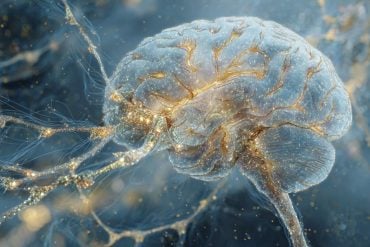Key Questions Answered
Q: What did the study find about female body odor during ovulation?
A: Researchers identified three specific scent compounds that increase during ovulation and found they made armpit odor samples smell more pleasant to men, who also rated associated faces as more attractive and feminine.
Q: Did these compounds affect male physiology or emotions?
A: Yes—men exposed to the ovulation-linked scent mixture reported lower stress levels, and showed reduced levels of salivary amylase, a biomarker of stress.
Q: Are these compounds considered human pheromones?
A: Not definitively. While the scents influenced male perception and physiology, researchers caution that the results suggest pheromone-like effects but don’t confirm species-specific human pheromones.
Summary: Certain scent compounds in female body odor, which increase during ovulation, can subtly influence male perception and stress levels. When these compounds were added to model armpit odors, men found the scents more pleasant and rated images of women as more attractive and feminine.
These effects weren’t just psychological—stress markers like salivary amylase decreased, suggesting a calming physiological response. While this doesn’t prove the existence of human pheromones, the findings offer compelling evidence that body odor may unconsciously shape social and emotional interactions.
Key Facts:
- Ovulatory Signals: Three scent compounds rise during ovulation and affect male perception.
- Emotional Effect: Exposure to these scents reduced stress and increased perceived attractiveness.
- Not Pheromones (Yet): Results suggest pheromone-like effects, but don’t meet strict scientific definitions.
Source: University of Tokyo
Researchers at the University of Tokyo explored how female body odor can influence behaviors in men.
They found certain scent compounds in female body odor increased during ovulation and can subtly influence how men feel. When these scents were added to armpit odor samples, men rated them as more pleasant and faces associated with the samples as more attractive. The scents also seemed to reduce stress.
The team states this is not evidence of pheromones in humans, but that smell might subtly shape how we people interact.
While they’re a common staple of pop culture, especially in romantic comedies, pheromones, behavior-altering compounds shared between organisms, might make for fun storylines, but they have not been demonstrably proven to exist in humans.
However, a new study by the Department of Applied Biological Chemistry and the International Research Center for Neurointelligence (WPI-IRCN) at the University of Tokyo does show something measurable and interesting is happening analogous to the idea of pheromones.
“We identified three body odor components that increased during women’s ovulatory periods. When men sniffed a mix of those compounds and a model armpit odor, they reported those samples as less unpleasant, and accompanying images of women as more attractive and more feminine,” said Professor Kazushige Touhara.
“Furthermore, those compounds were found to relax the male subjects, compared to a control, and even suppressed the increase in the amount of amylase (a stress biomarker) in their saliva. These results suggest that body odor may in some way contribute to communication between men and women.”
Previous studies by different groups already discovered that female body odor changes throughout the menstrual cycle and that the changes in the ovulatory phase can be perceived by men and are reported as being pleasant. But the specific nature of these odors went unidentified and is something this latest study managed to achieve.
To do this, Touhara and his team used a technique for chemical analysis called gas chromatography-mass spectrometry and identified volatile compounds that fluctuate across menstrual cycle phases.
“The most difficult part of the study was to determine the axillary (armpit) odor profile within a woman’s menstrual cycle. Of particular difficulty was scheduling more than 20 women to ensure that axillary odors were collected at key times during their menstrual cycles,” said first author Nozomi Ohgi, a graduate student in Touhara’s lab at the time of the study.
“We also needed to interview each participant frequently regarding body temperature and other indicators of the menstrual cycle in order to understand and track their status. This required a great deal of time, effort and careful attention. It took more than one month per participant to complete the collection within the menstrual cycle, so very time consuming.”
Another challenge the researchers faced was to ensure the tests were done “blind,” meaning the participants did not receive any hints about what they were smelling or why, with some participants being given nothing at all as a measure of control. This way, psychological factors and expectations can be reduced or eliminated.
Outside the experiment itself lies another issue, that the nature of this study might encourage some people to think this is evidence of pheromones, which are known to steer behaviors in some animals, including mammals.
“We cannot conclusively say at this time that the compounds we found which increase during the ovulation period are human pheromones. The classical definition of pheromones is species-specific chemical substances that induce certain behavioral or physiological responses,” said Touhara.
“But from this study, we can’t conclude whether the axillary odors are species-specific. We were primarily focused on their behavioral or physiological impacts, in this case, the reduction of stress and change in impression when seeing faces. So, at this moment, we can say they may be pheromonelike compounds.”
The team plans to explore further dimensions to this research, including broadening the kinds of people involved to eliminate the chance of a specific genetic trait influencing results, performing deeper chemical analysis, and looking at how ovulatory compounds might affect the active areas in the brain related to emotion and perception.
Funding: This work was supported by the ERATO Touhara Chemosensory Signal Project to K.T. (JPMJER1202), the JST Mirai program to K.T. (JPMJMI17DC and JPMJMI19D1), and JSPS KAKENHI grants (18K14651 and 22K06418 to M.S.; 21K13546 to Y.H.; 18K02477, 18H04998 and 21H05808 to M.O.; and JP18H05267 and JP23H05410 to K.T.), and Grant for Women Scientists in Challenging Research by Japan Society for Bioscience, Biotechnology, and Agrochemistry (JSBBA) to M.S.
Patent application: A patent application has been filed under PCT Application No. PCT/JP2024/024888, based on the results of this study.
About this olfaction and behavioral neuroscience research news
Author: Rohan Mehra
Source: University of Tokyo
Contact: Rohan Mehra – University of Tokyo
Image: The image is credited to Neuroscience News
Original Research: Open access.
“Human ovulatory phase-increasing odors cause positive emotions and stress-suppressive effects in males” by Kazushige Touhara et al. iScience
Abstract
Human ovulatory phase-increasing odors cause positive emotions and stress-suppressive effects in males
In many animals, olfactory cues are key for recognizing their sex, kinship, and reproductive status.
In humans, it has been proposed that males find female body odors attractive during the ovulatory phase, coinciding with peak fertility.
However, the molecular and physiological foundations of this attractiveness remain unclear.
In this study, we combined sensory evaluation with gas chromatography-mass spectrometry for chemical analysis and identified volatile compounds that fluctuate across menstrual cycle phases.
We identified three ovulatory phase-increasing compounds that mitigate the basal unpleasant axillary odor, resulting in the ovulatory-phase body odor being perceived as the most pleasant by males.
Additionally, these compounds alleviated hostility and stress induced by the basal axillary odor, leading to relaxation in males and an enhanced positive impression of female facial images.
Our results suggest that several ovulatory phase-increasing compounds may contribute to the positive effects of ovulatory female odor on males, as proposed in previous research.








